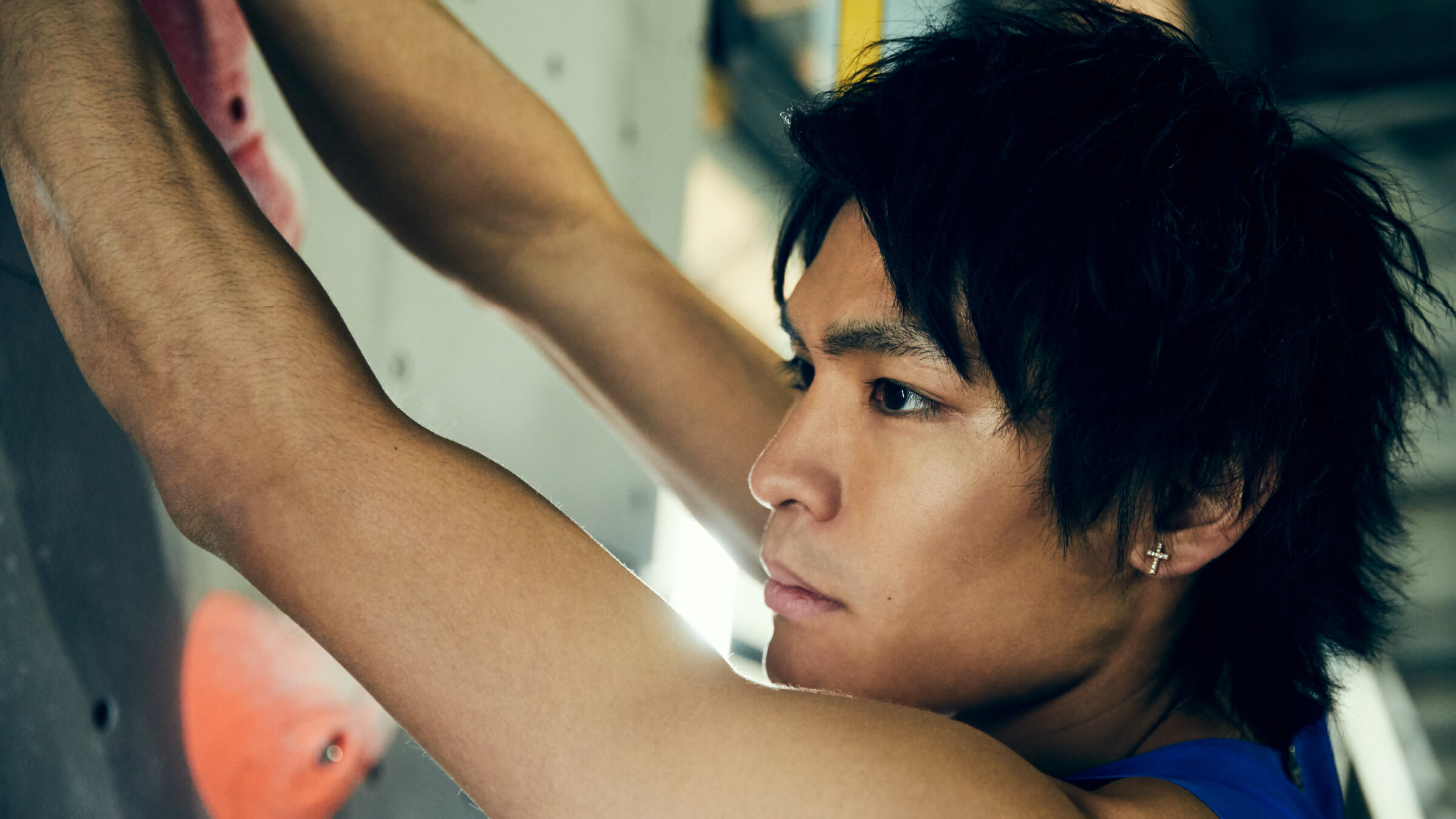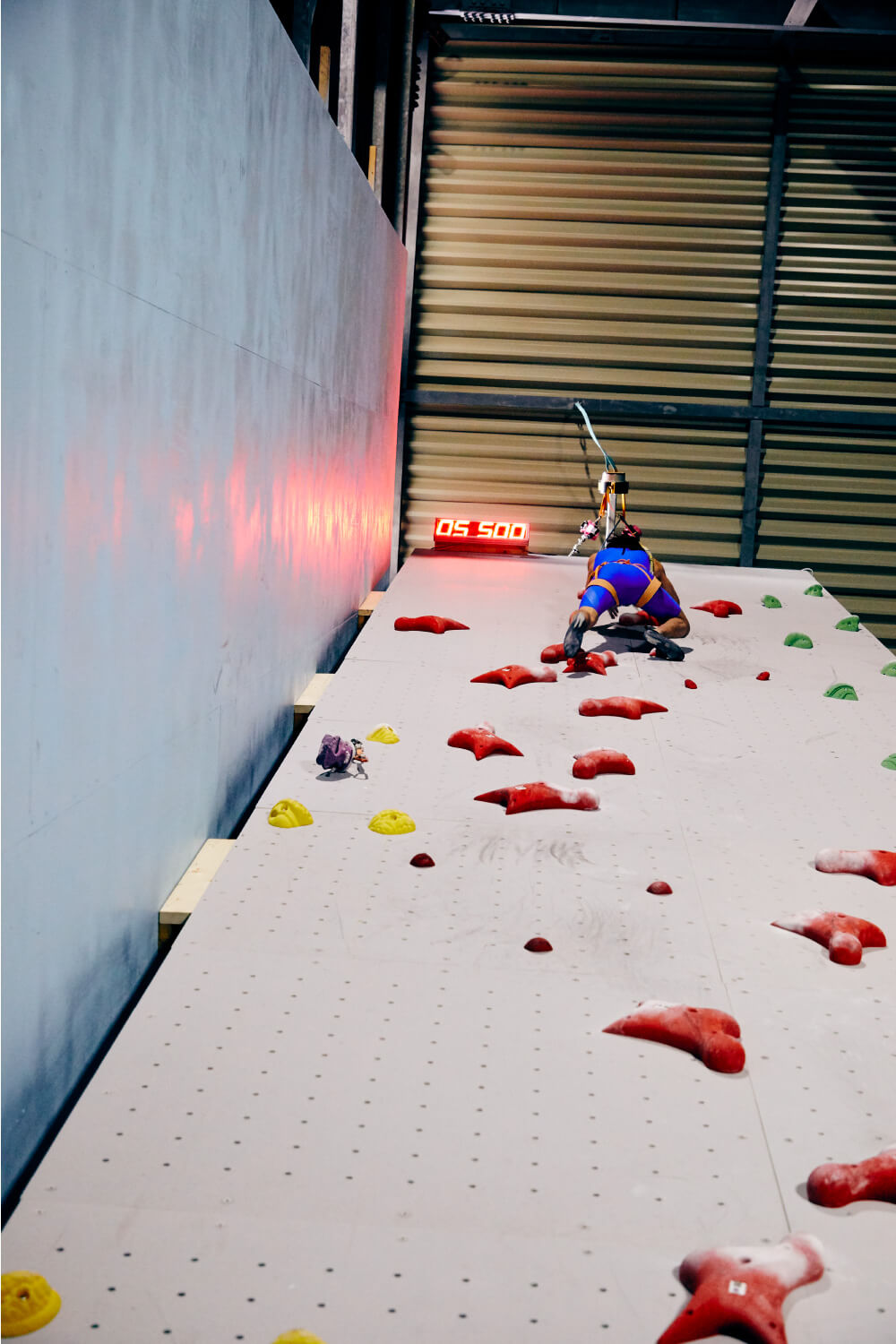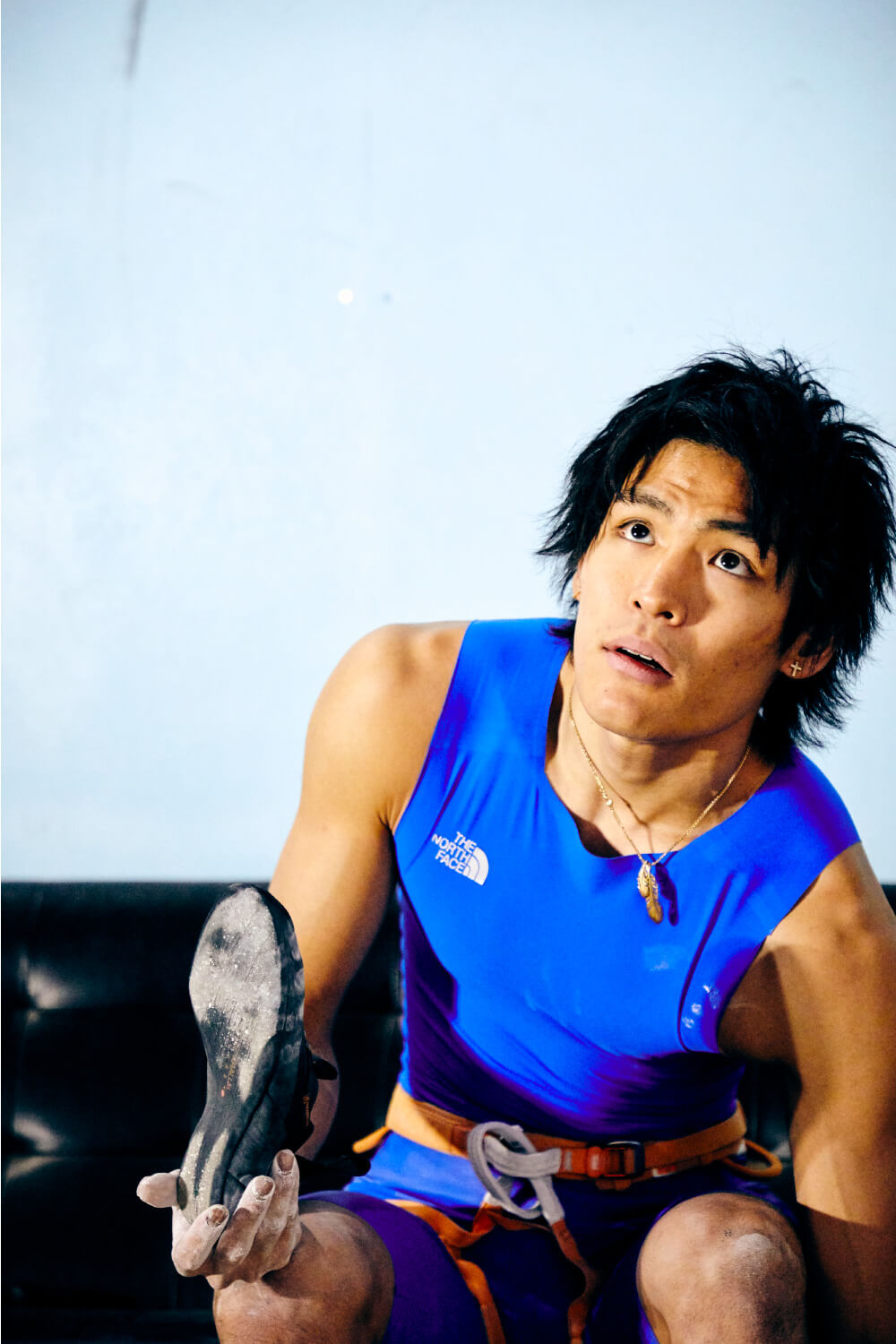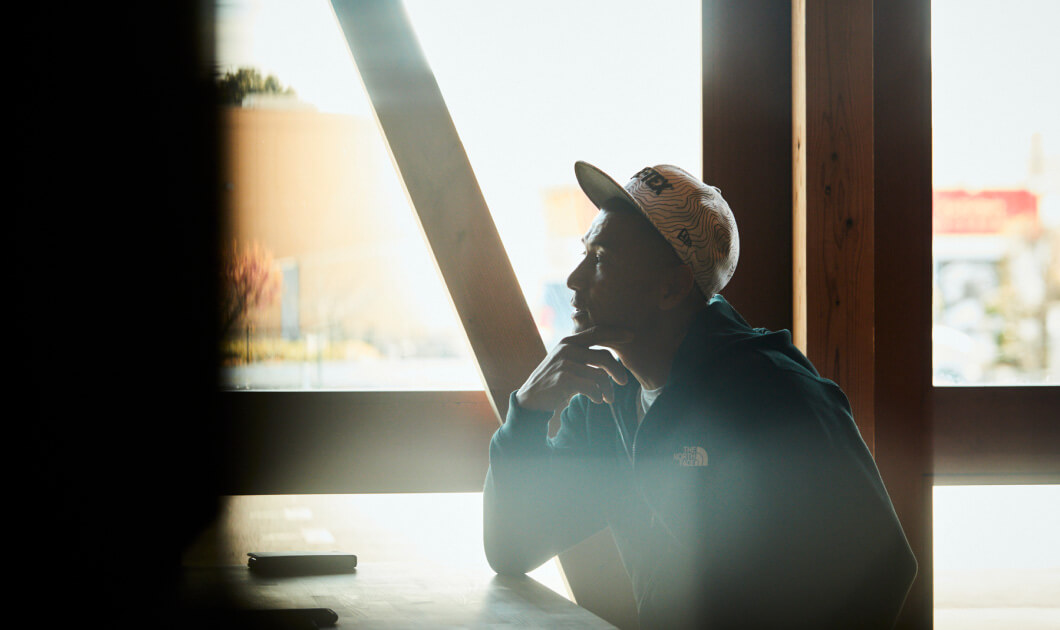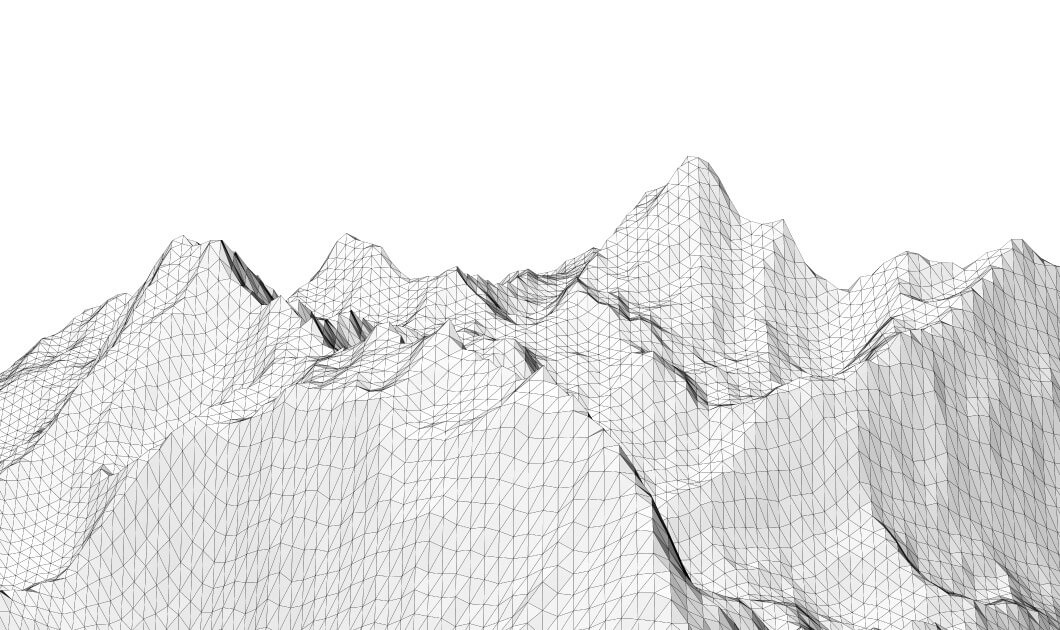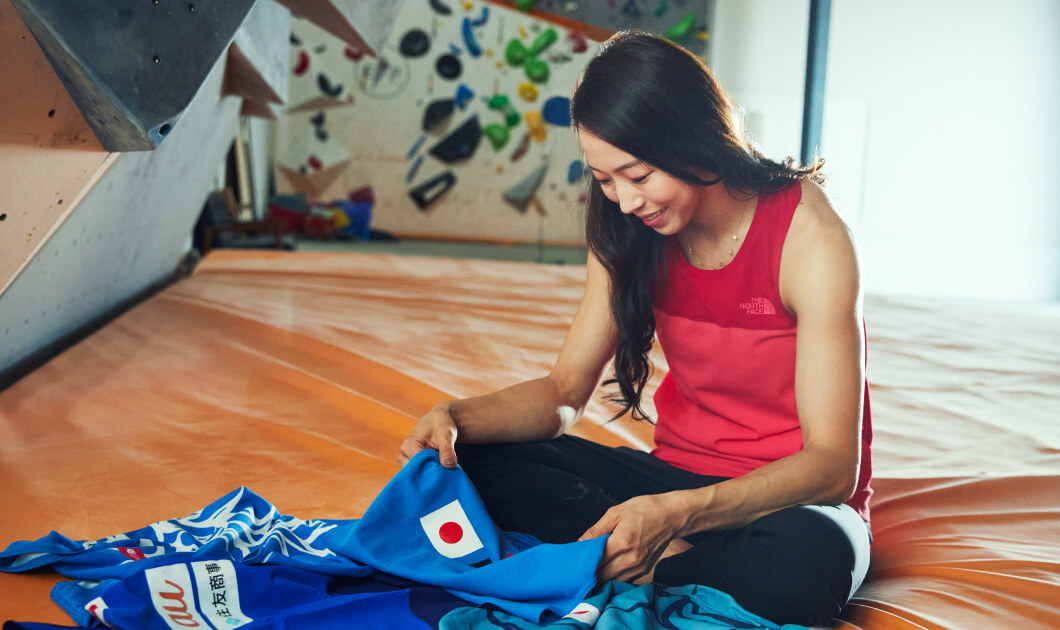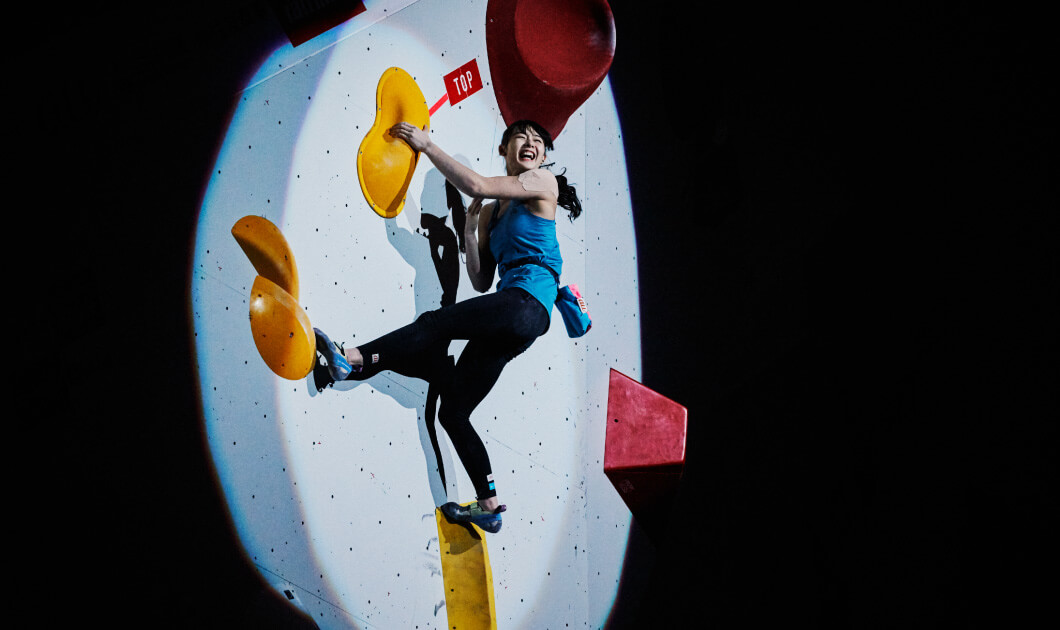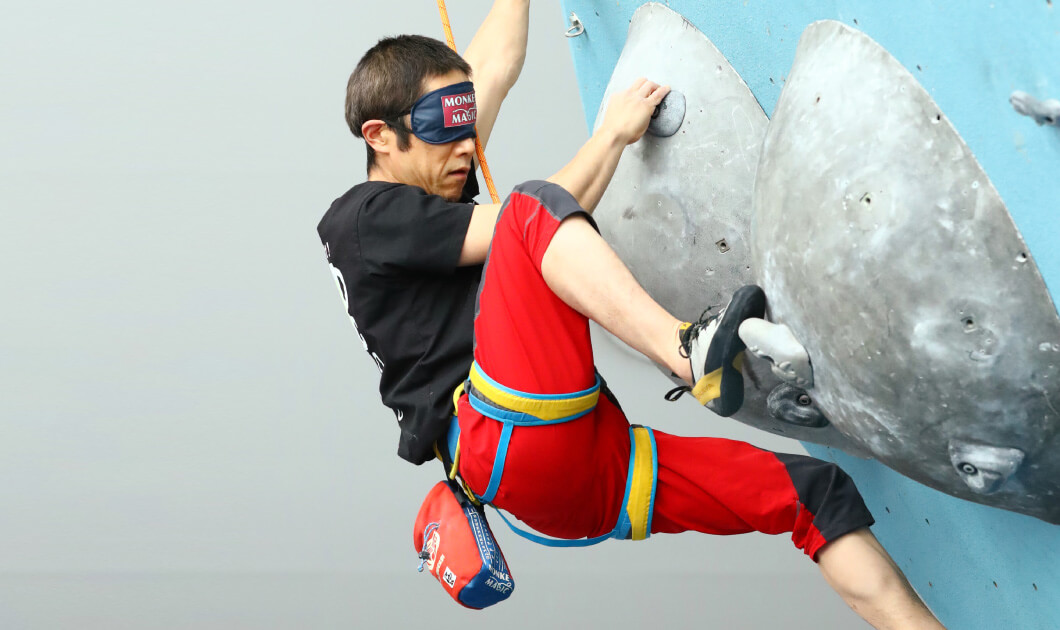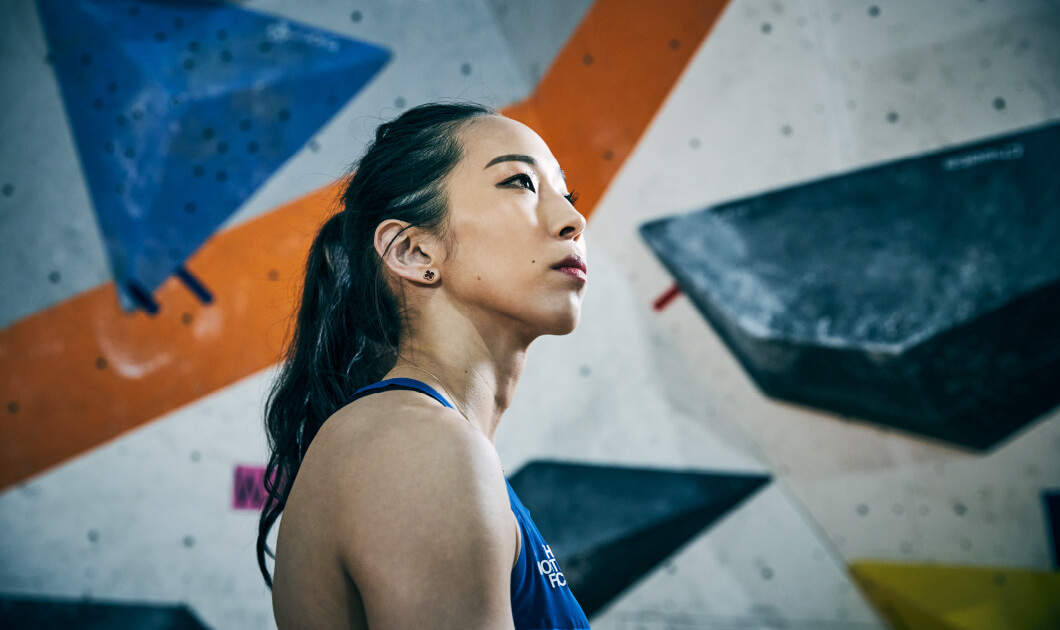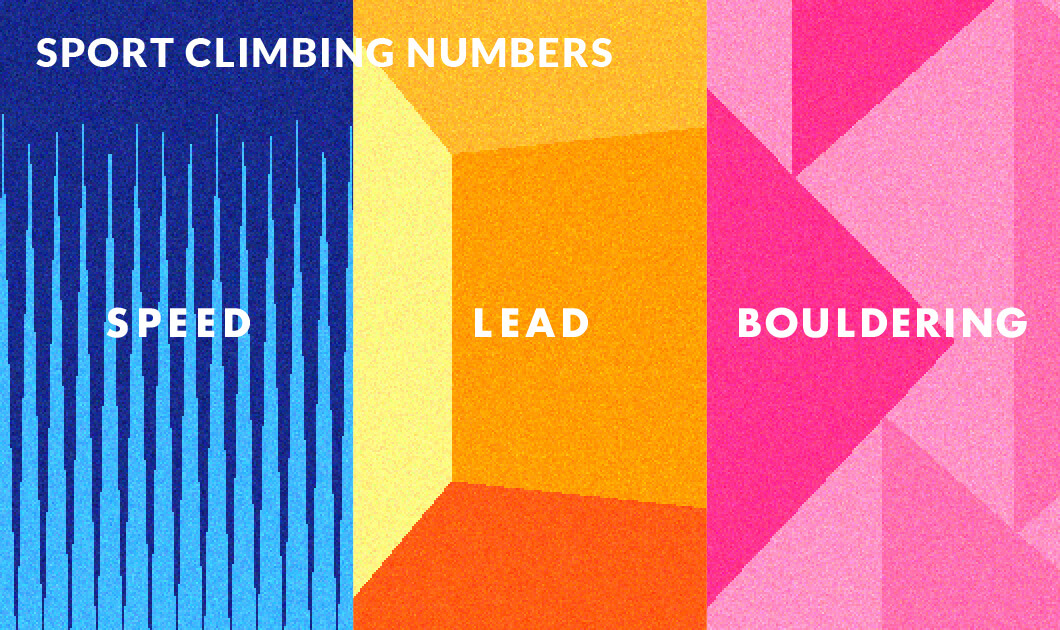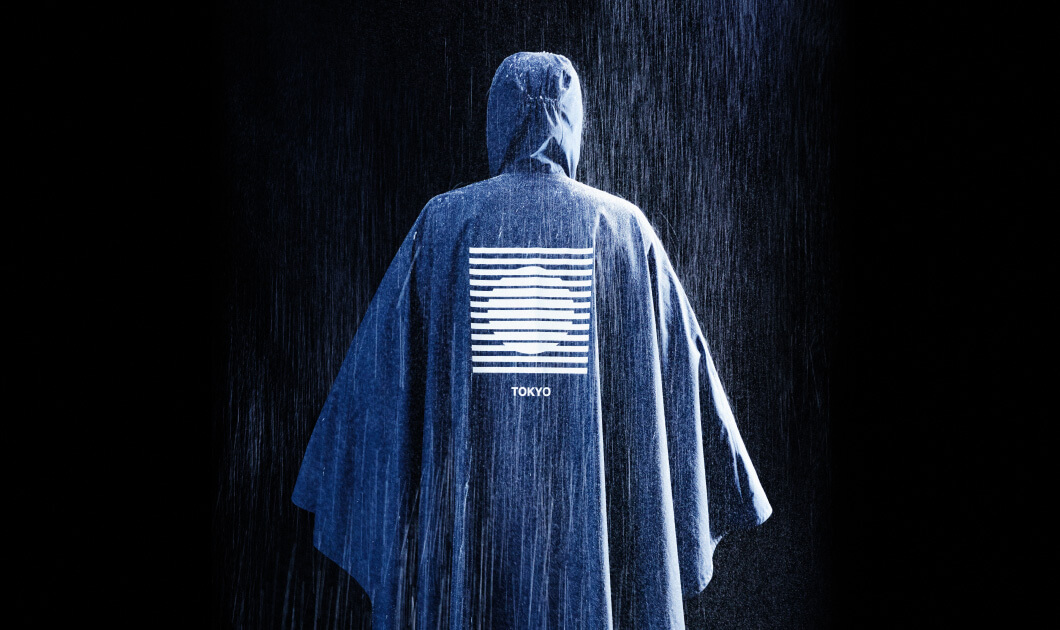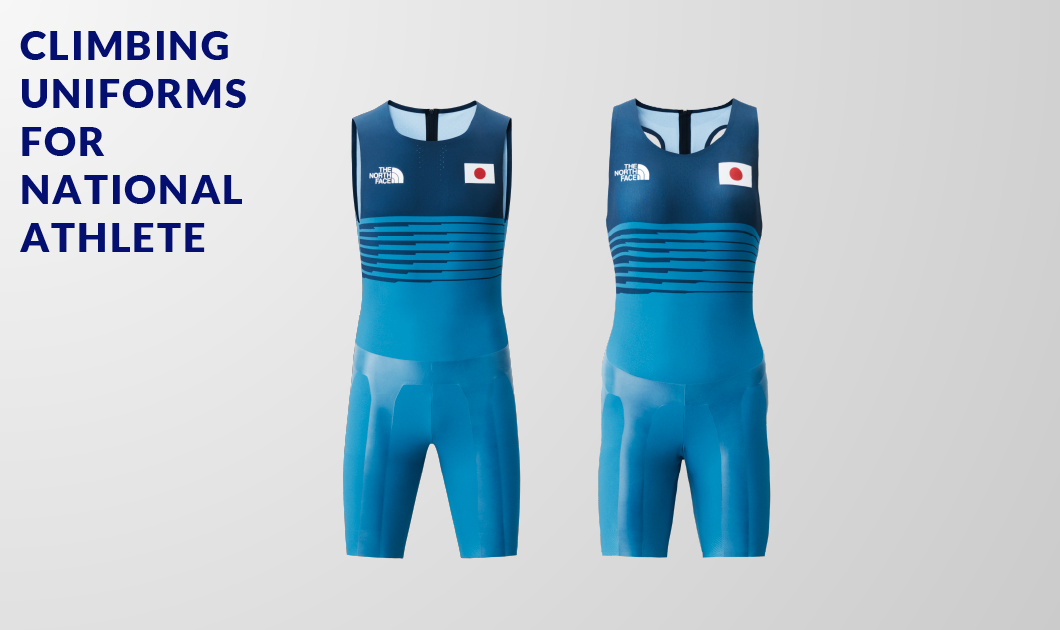Sportswear Like Never Before
For the highest pinnacle of 2021, The North Face has created an entirely new garment. The company, indubitably, has created sportswear in the past. However, when it comes to “kit specific for climbing competitions,” this is most probably the first ever attempt in the world by anyone. Starting about three years prior in top secrecy and groping in the dark, a major turning point came from these words uttered by Tomoa Narasaki: “If I could lift my legs faster, I could climb faster.”
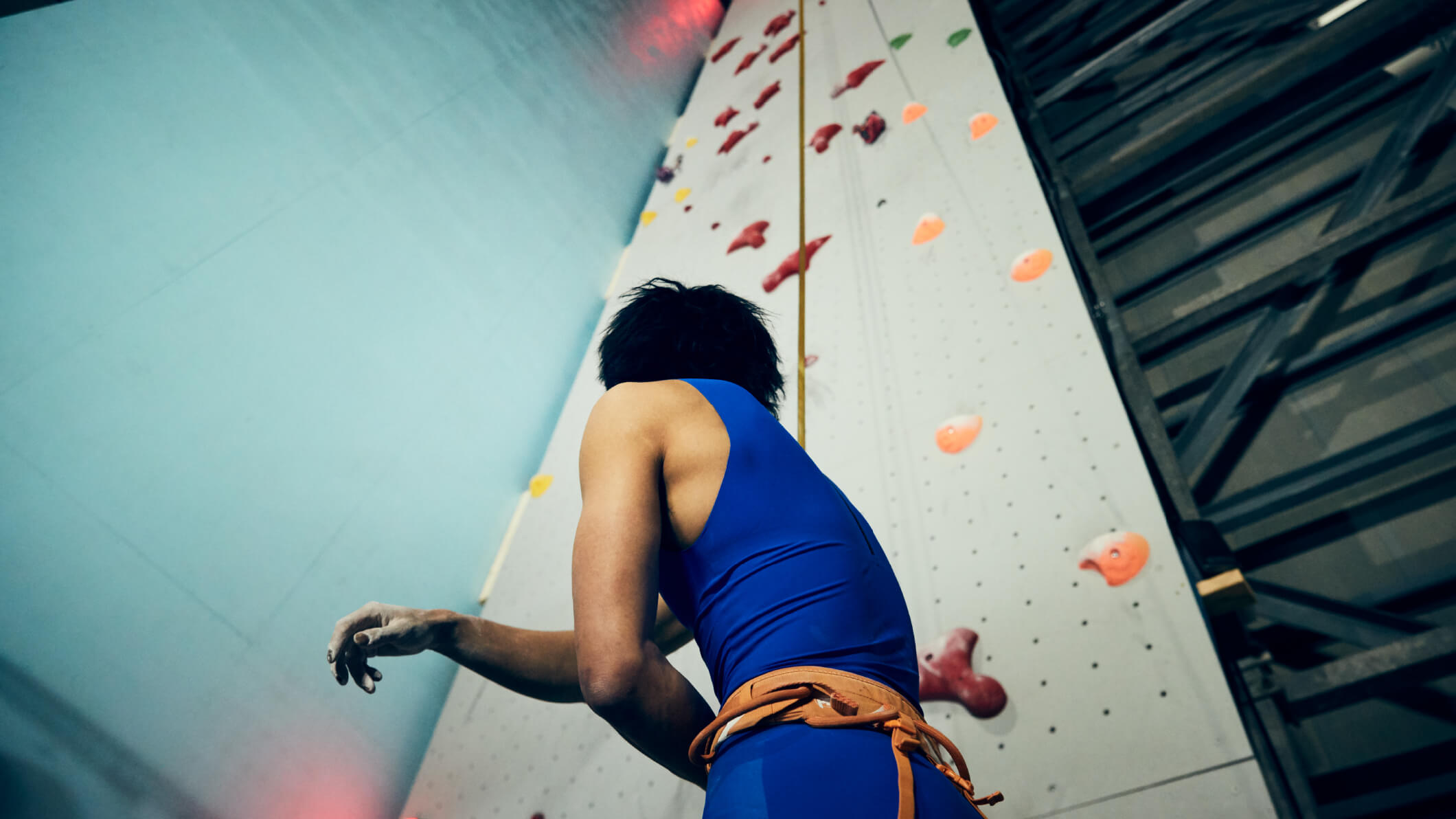
“We had previously made sport climbing uniforms, but they were mere extensions of regular sportswear. So we first started by thoroughly researching the characteristics of the three combined disciplines (lead climbing, bouldering, and speed climbing) and determined what kind of kit would be the most suitable. In regards to speed, there is a globally standardized route so the winning factor is how certain moves could be made faster. So we strove to make a kit that allowed for faster climbing and something that would enhance the skills that the athletes already have.” [Yuri Aoyagi, Merchandiser The North Face]
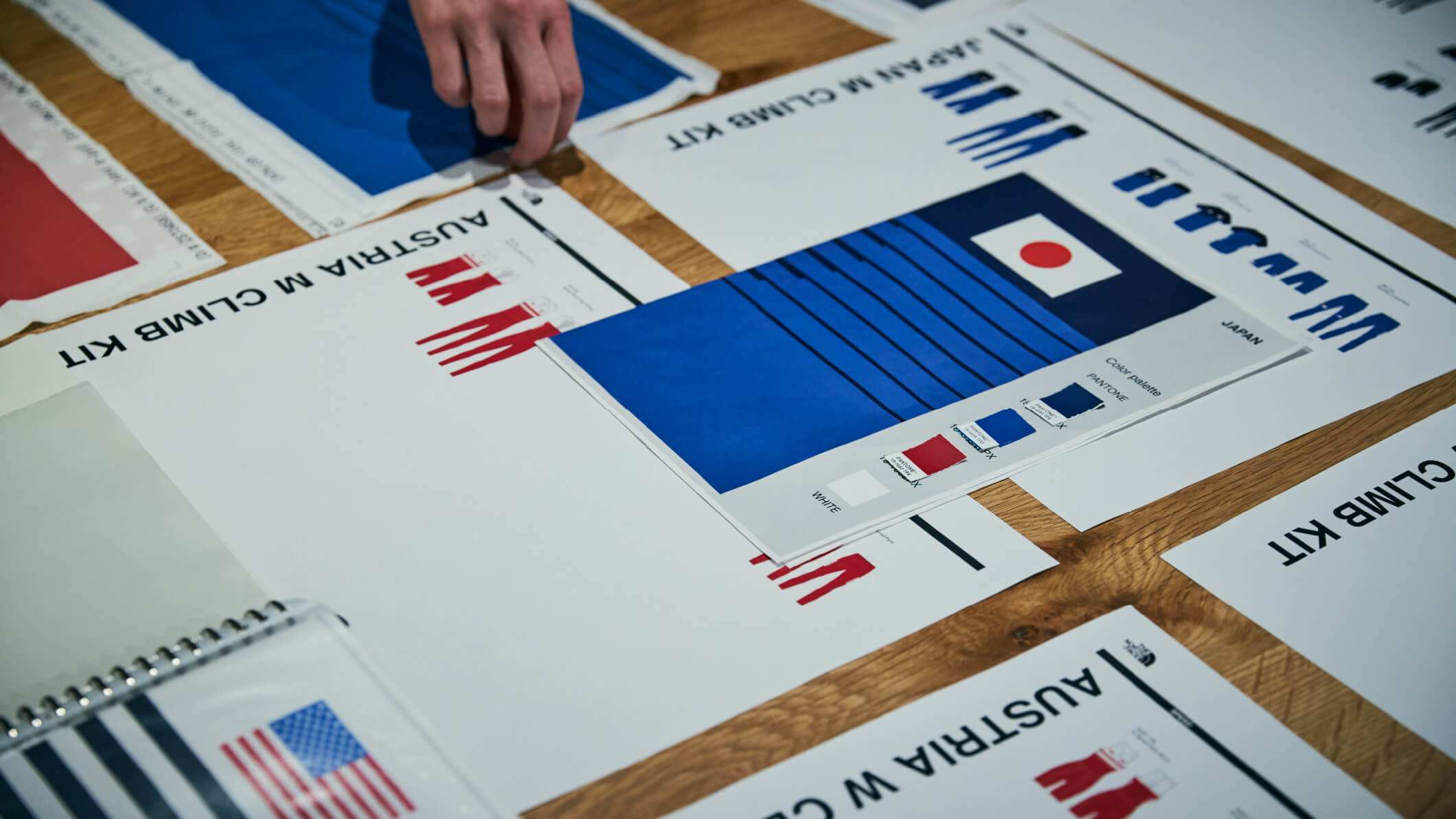
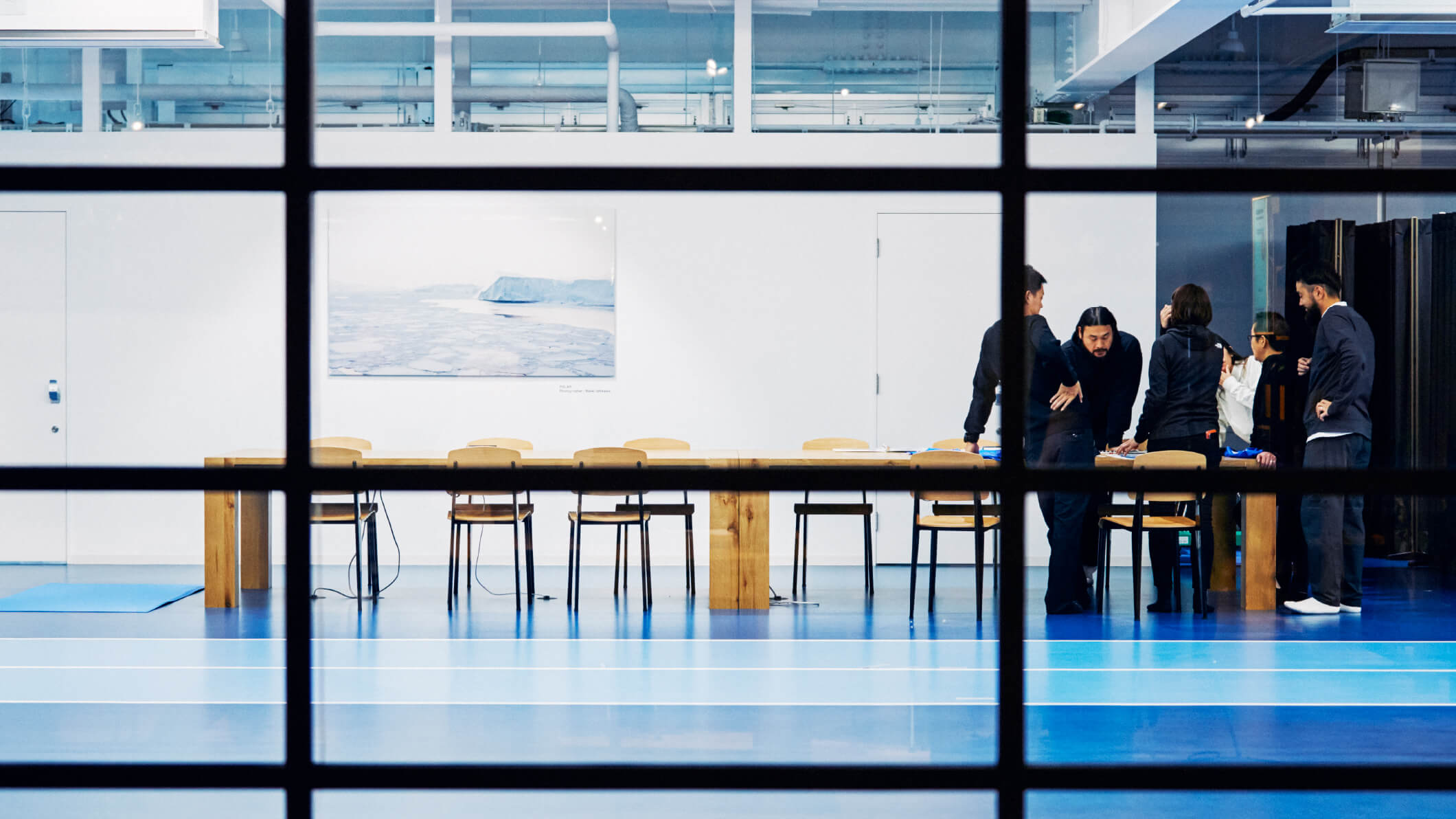
Pursuing Logic to Go Beyond One’s Ability
Emphasis was placed on the idea of “developing along with the athletes.”
“Our US HQ has always thought highly of the detail-oriented craftsmanship from Japan and that there was no going wrong when it comes to the functionality of products developed in Japan. Furthermore, Narasaki and other world-class climbers are always readily available for testing situations. So, it was decided that Japan would lead the development of the national team uniforms for not only Japan, but also the US, Austria, and Korea.” [Taishi Goto, Product Manager, The North Face]
“We wanted to make the best uniform for each athlete, but at first we didn't know what to do.” [Kota Kimura, Goldwin Tech Lab]
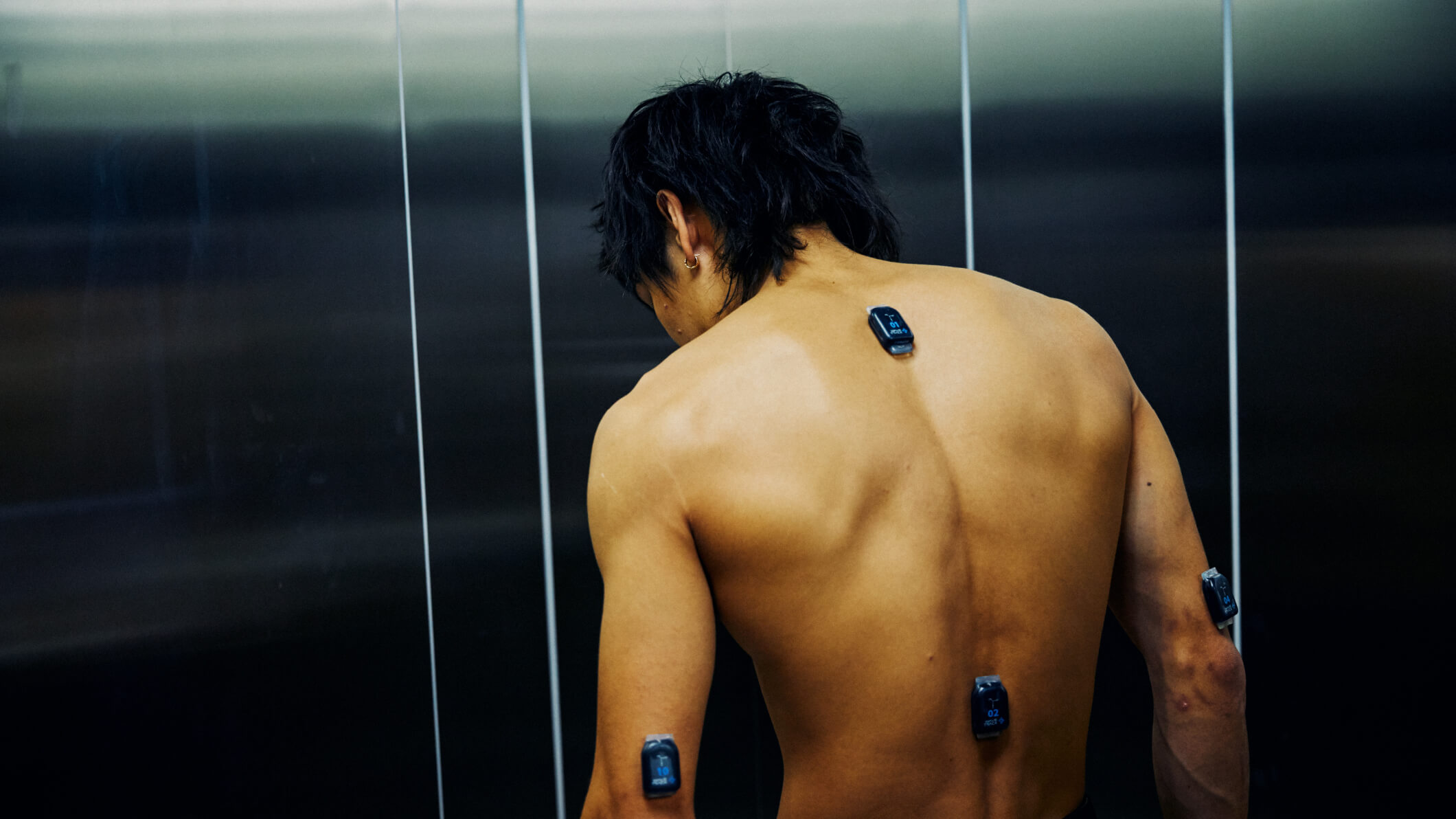
What became the key were the words that Narasaki had uttered. “I had thought that being able to lift my legs quickly and minimizing side body movement were the most important aspects in the speed competition. In discussing with the development team, I told my thoughts frankly.”
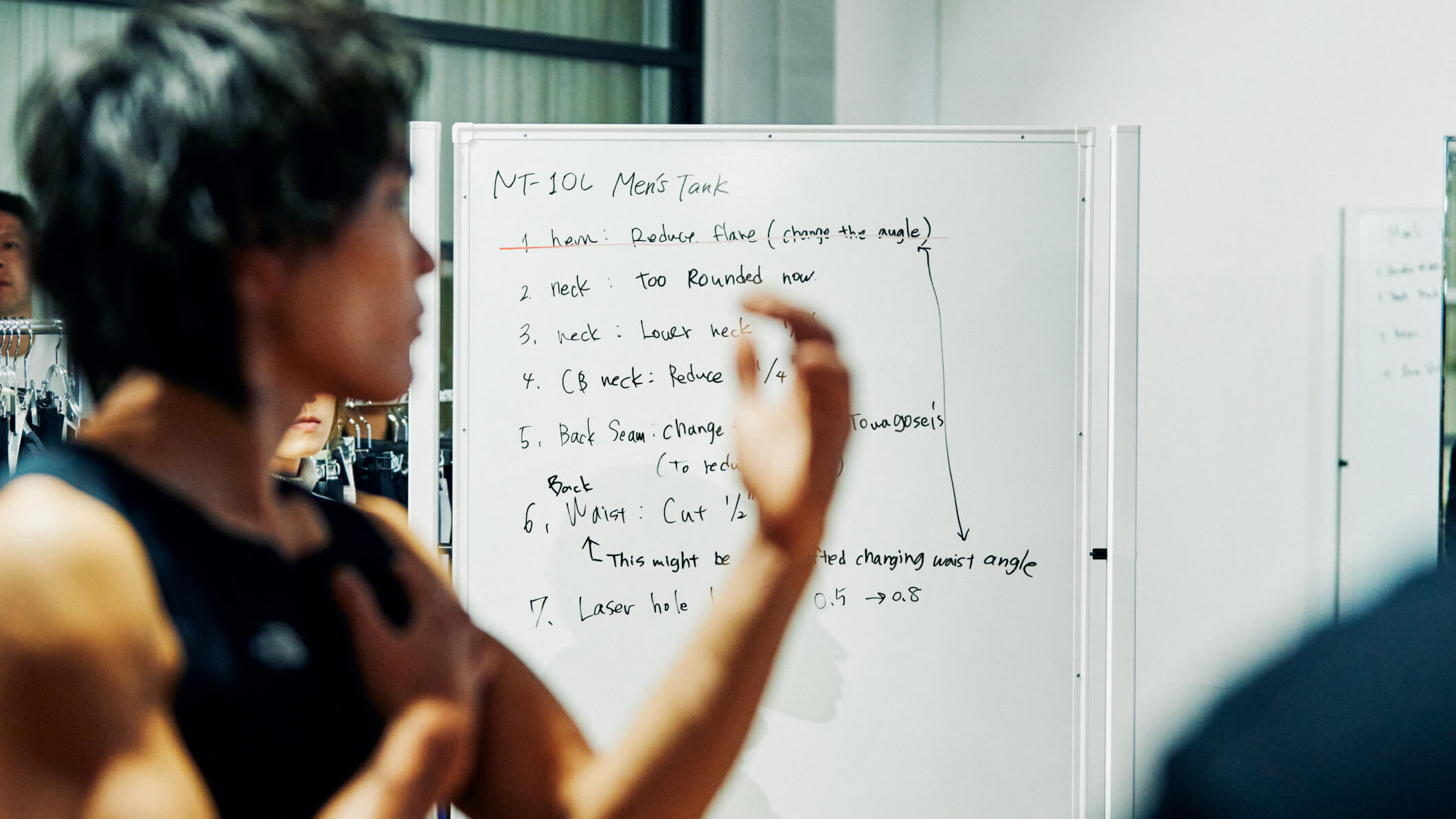
Would being able to lift his legs faster yield a better record? At The North Face’s Goldwin Tech Lab in Toyoma prefecture, measurements were taken many times to attain numerical evidence to this claim. Narasaki also had motion and electromyography sensors attached to his body and repeatedly ran up a speed wall.
“In comparing the climbs between good and bad records, it was clear that when he was able to lift his legs faster and stronger, his speed was better. Quantifying an aspect of the speed competition, we were able to ascertain what we could do to make a kit with advantages. In other words, the logic for improving performance was in place. The rest of our job was how to pursue it.” [Kota Kimura, Goldwin Tech Lab]
On a climbing wall, after the foot pushes off of a hold, there is a moment that works against the movement to push back up. This is what slows down the leg lifting. Silicon prints were applied around his upper thighs and lower back to provide tension to lift his legs when in position to climb speed walls. The idea is that the rubber material assists with the lifting. To maximize the performance of these materials, a form-fitting, compression-type bodysuit was chosen.
Beyond the 5 Seconds
Looking back, Narasaki recalls that it was a little scary to climb wearing this kit for the first time.
“It’s not just wearing the kit, but if there is any tension in my body or a habit that I can’t shake, it affects the climb. Not to mention, it’s a struggle to get the zipper on the back of this suit up by myself. However, the process of going inside a machine to get a 3D scan to figure out what fits my body was eye-opening. In this regard, I was hopeful that the team was going to make something that was going to work.”
From the prototype stage, numerous samples were tested. Narasaki went to the Tech Lab again to have the suit personalized to his particular physique and individualized adjustments were made to the positions of the silicon prints. With his new record set in the summer of 2020, his kit was updated even further.
“My training method was given a complete changeover. Before, I used to climb all the way through from the bottom to the top, but since starting to repeatedly practice specific parts of a climb in small sections, the precision of each move has improved significantly. When I am trying to set a new record during practice, I wear this suit. One thing, however, in the beginning was that my upper body felt constricted and felt like it was being pulled in the front—so I told the team about this right away.”
His feedback is connected to the fact that he had made a change in his climbing posture.
“Speed climbing can be divided into the two parts: the bottom section and the top section. While in the bottom half, I can climb faster if I lean forward a bit, but I realized that, in the top half, I can go faster if my chest is upright and my hands are pulled slightly to the back.”
In participating in the development of the kit intimately, Narasaki was able to observe his climbing more objectively. In December of 2020, another 3D body scan was completed, and the uniform was reconfigured with assorted adjustments. On the official stage of Speed Japan Cup of March 2021, Narasaki set an astounding new Japanese record of 5:72 seconds—only 0:52 seconds short of the World Record.
“I just want to compete in 2021. With the current global situation, we don’t know how many World Cups will take place, but I want to win the Annual Champion title, including the World Championship title and all of the large competitions.”
Tomoa Narasaki
英文無し)
プロ・フリークライマー。1996年6月22日生まれ、栃木県出身。生来の指の関節の強さと幼い頃体操で培ったしなやかさを武器にプロ転向から、わずか2年間で世界のトップに立つ。2016年の世界選手権では、日本人初の優勝を飾る。2017年のスポーツクライミングのワールドカップではリード、ボルダリング、スピードの3種目で争われる複合部門で初の総合優勝を達成。同じく日本代表選手の3歳下の弟・明智がいる。


